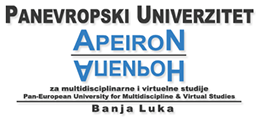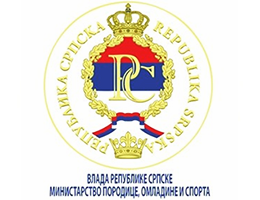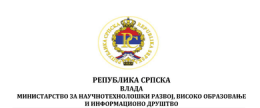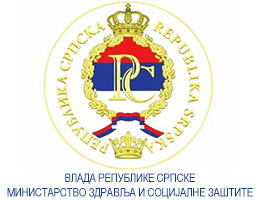Implementation Of Basic Preparation Model In Order To Improve Motor And Situational-Motor Skills Of Handball Players
Volume 2, Issue 2 (2012)
Volume 2, Issue 2 (2012)
Implementation Of Basic Preparation Model In Order To Improve Motor And Situational-Motor Skills Of Handball Players
Abstract:
For purposes of this study a sample of 120 examinees is used - students of primary schools in Banja Luka, Istocno Sarajevo, Nis and Belgrade, ages 11 and 12, ± 6 months. The sample is divided into two subsamples. The first subsample (experimental group) included 50 students, who in addition to regular physical education classes were attending handball schools and were covered by precisely defined experimental work model of basic preparation for a period of three months (36 training hours). The second subsample (control group) included 70 students who were only engaged in regular physical education classes. The study was conducted with the aim to determine whether there will be statistically significant change in levels of motor and situational-motor skills at the end of experimental treatment in young handball players, and whether the experimental group compared to control group at the final measurement significantly differs in the analyzed skills. Analysis of the differences between initial and final measurements of the experimental and control group was determined using t-test, multivariate analysis of variance (MANOVA) was applied to determine the existence of statistically significant differences between control group and experimental group during the initial and final measurement. In addition, the univariate analysis of variance (ANOVA) was applied to determine the statistical significance of differences for each variable. The results of experiment indicate that the experimental group at the end of the experimental period compared to the control group showed statistically significant increase of levels in all of applied tests of motor and situational-motor skills.
Keywords:
specific training models, young handball players, situational-motor and motor skills
Full Text:
References:
- Adams,T.M., & Brynteson, P. (1993). The effecte of conceptualy based physical programs on attitudes and exercise habits of colege alumni after 2 to 11 years of follow-ap. Research quarterly for exercise and sport, 64(2), 208–212.
- Bompa, T. (2001). Periodisation: Theory and methodology of training. (Periodizacija: Teorija i metodologija treninga). Champaign IL: Human Kinetics.
- Brown, L., Ferrigno, V. i Santana, C. (2000). Training for speed, agility and quickness. (Trening brzine, agilnosti i eksplozivnosti). Champaign IL: Human Kinetics
- Faletar, L., Bonacin, D. (2007). Evaluation of transformation procedures at the ages of 13 -14, estimated by the final status of two diferrent samples. Acta Kinesiologica, 1(1),49-57.
- Freitas, D., Maia, J., Beunen, G., Claessens, A., Thomis, M., Marques, A., ... & Lefevre, J. (2007). Socio-economic status, growth, physical activity and fitness: The Madeira Growth Study. Annals of Human Bology, 34(1), 107–122.
- Goranović, S., Karišik, S., Fulurija, D. i Valdevit, Z. (2011). Doprinos eksperimentalnog programa iz rukometa poboljšanju motoričkih sposobnosti učenika. U Zborniku sažetaka 3. Međunarodne naučno-stručne konferencije ’’Antropološki aspekti sporta’’, str.29. Banja Luka: Fakultet fizičkog vaspitanja i sporta.
- Goranović, S., Kahvić, J., Kuzmanović, D.(2009). Efekat specifičnog trenažnog modela rada na razvoj agilnosti kod mladih rukometaša. U Zborniku I Međunarodnog naučnog kongresa “Antropološki aspekti sporta, fizičkog vaspitanja i rekreacije”, str. 143-148. Banja Luka: Fakultet fizičkog vaspitanja i sporta.
- Heimar, S. i Medved (1997). Praktikum kineziološke fiziologije (drugo izmijenjeno i dopunjeno izdanje). Zagreb: Fakultet za fizičku kulturu Sveučilišta u Zagrebu.
- Hodžić, M. i Mekić, M. (2008). Utjecaj transformacionog programa dodatnih sati tjelesnog odgoja na tjelesni i motorički razvoj djece uzrasta od 14 do 16 godina. U Zborniku radova IV Međunarodne konferencije „Menadžment u sportu“, str. 421-441. Beograd: Fakultet za menadžment u sportu.
- Kurelić N., Momirović, K., Stojanović, M., Radojević, Ž. i Viskić-Štalec, N. (1975). Struktura i razvoj morfoloških i motoričkih dimenzija omladine. Beograd: Institut za naučna istraživanja Fakulteta za fizičku kulturu.
- Malacko, J. i Rađo, I. (2005). Tehnologija sporta i sportskog treninga. Sarajevo: Fakultet sporta i tjelesnog odgoja.
- Malacko, J. i Popović, D. (1997). Metodologija kineziološko- antropoloških istraživanja. Priština: Fakultet za fizičku kulturu.
- Perić, D. (2004). Efekti fizičkog vaspitanja na razvoj morfoloških karakteristika, motoričkih i situaciono-motoričkih sposobnosti dječaka školskog uzrasta. Neobjavljeni magistarski rad. Niš: Fakultet fizičke kulture.
- Shepard,R.J., & Zavalle , H. (1994). Changes of physical perfomance as indicator of the response to enhanced physical education. Journal of Sports Medicine and Physical Fitness, 34, 323-335.






